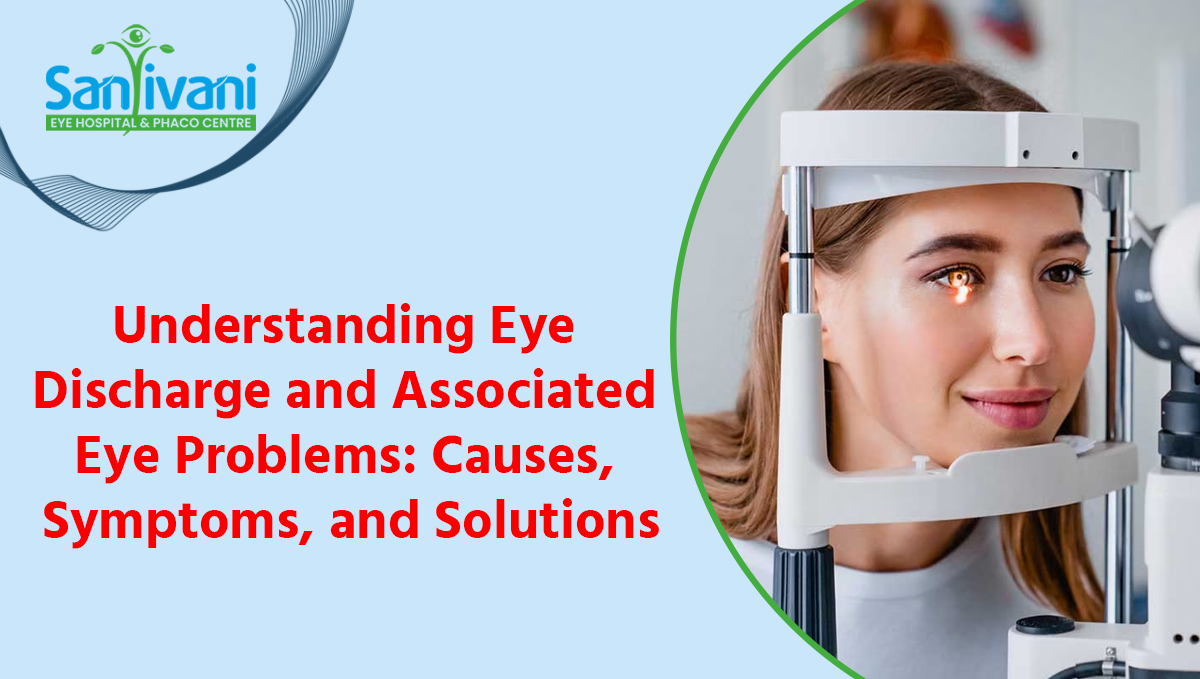
Understanding Eye Discharge and Associated Eye Problems: Causes, Symptoms, and Solutions
Eye discharge is a common yet often troubling issue that many people experience at some point in their lives. It can range from a mild annoyance to a significant concern depending on its cause and associated symptoms. In this blog, we'll explore what eye discharge is, its potential causes, associated problems, and how to address them effectively.
What is Eye Discharge?
Eye discharge, often referred to as "eye mucus" or "eye gunk," is a substance that can appear in or around the eyes. It can vary in consistency, color, and quantity, and is typically the result of an excess production of fluids by the eyes or the body's attempt to protect and cleanse the eye.
Types of Eye Discharge
- Clear and Watery : This type of discharge is often associated with allergies, viral infections, or excessive tearing.
- Yellow or Green : This indicates the presence of pus and is commonly linked to bacterial infections, such as conjunctivitis (pink eye).
- Thick and Sticky : Usually seen in cases of bacterial conjunctivitis or chronic dry eye conditions.
- Blood-Streaked : This can occur due to irritation, trauma, or a more serious condition that requires medical attention.
Common Causes of Eye Discharge
1. Conjunctivitis (Pink Eye):
One of the most frequent causes of eye discharge, conjunctivitis can be viral, bacterial, or allergic in nature. Symptoms include redness, swelling, itching, and a discharge that may crust over, especially after sleep.
2. Blepharitis :
This is an inflammation of the eyelid margins, often caused by bacterial infection or seborrheic dermatitis. It can lead to red, swollen eyelids and a greasy, yellowish discharge.
3. Dry Eye Syndrome :
Dry Eye Syndrome
4. Allergic Reactions :
Allergies to pollen, dust, or pet dander can lead to watery discharge, redness, and itching. The discharge is usually clear and associated with other allergy symptoms.
5. Blocked Tear Ducts :
If the tear ducts are blocked, tears can build up and cause discharge. This condition is more common in infants and older adults.
6. Foreign Bodies or Eye Trauma :
Anything that enters the eye or causes injury can lead to discharge as the eye attempts to clear the irritant.
7. Uveitis :
This is an inflammation of the uvea, the middle layer of the eye. It can cause eye pain, redness, sensitivity to light, and a discharge that might be accompanied by blurred vision.
Associated Eye Problems
Eye discharge is rarely an isolated issue and can be accompanied by other symptoms that can provide clues to its cause:
- Redness and Swelling : Often seen with conjunctivitis and blepharitis, indicating inflammation.
- Itching and Burning : Common in allergic reactions and dry eye syndrome.
- Pain and Sensitivity to Light : May occur with uveitis or more severe infections.
- Vision Changes : Blurred or decreased vision can signal a more serious condition like uveitis or a corneal infection.
When to Seek Medical Help
While mild cases of eye discharge can often be managed with home care, certain symptoms warrant a visit to an eye specialist:
- Persistent or worsening discharge despite treatment.
- Severe pain, light sensitivity, or vision changes.
- Discharge accompanied by a fever or swollen lymph nodes.
- Newborns or young children with eye discharge, as they are more vulnerable to infections.
Home Remedies and Treatments
- Good Hygiene : Regularly washing your hands and avoiding touching your eyes can prevent the spread of infections.
- Warm Compresses : Applying a warm, damp cloth to the eyes can help alleviate discomfort and loosen crusted discharge, especially in cases of blepharitis.
- Artificial Tears : For dry eyes, over-the-counter artificial tear drops can provide relief.
- Antibiotics or Antiviral Medications : Prescribed by a doctor if the discharge is due to bacterial or viral infections.
- Allergy Medications : Antihistamines or anti-allergy eye drops can help manage allergic reactions.
- Avoiding Irritants : Identifying and avoiding triggers such as pollen or smoke can reduce allergic eye symptoms.
Preventing Eye Discharge
Preventative measures include maintaining good eye hygiene, avoiding known allergens, and managing underlying health conditions that may contribute to eye problems. Regular eye exams can help catch and address potential issues before they become serious.
Conclusion
Eye discharge, while often benign, can sometimes indicate more significant issues that require attention. By understanding the potential causes and associated symptoms, you can better manage the condition and seek appropriate treatment when necessary. If in doubt, consulting with an eye care professional ensures that you receive the right care for your eye health needs.